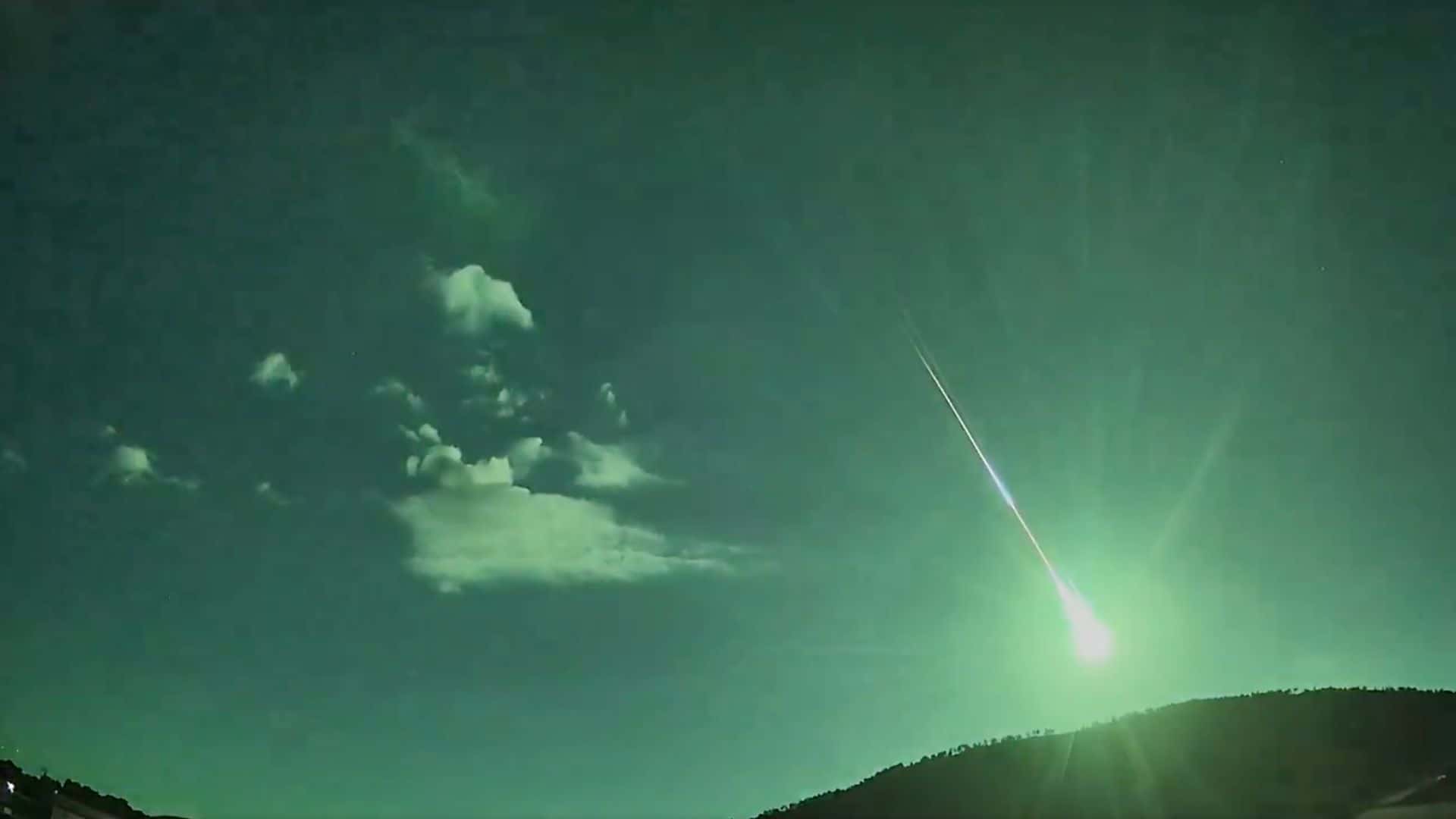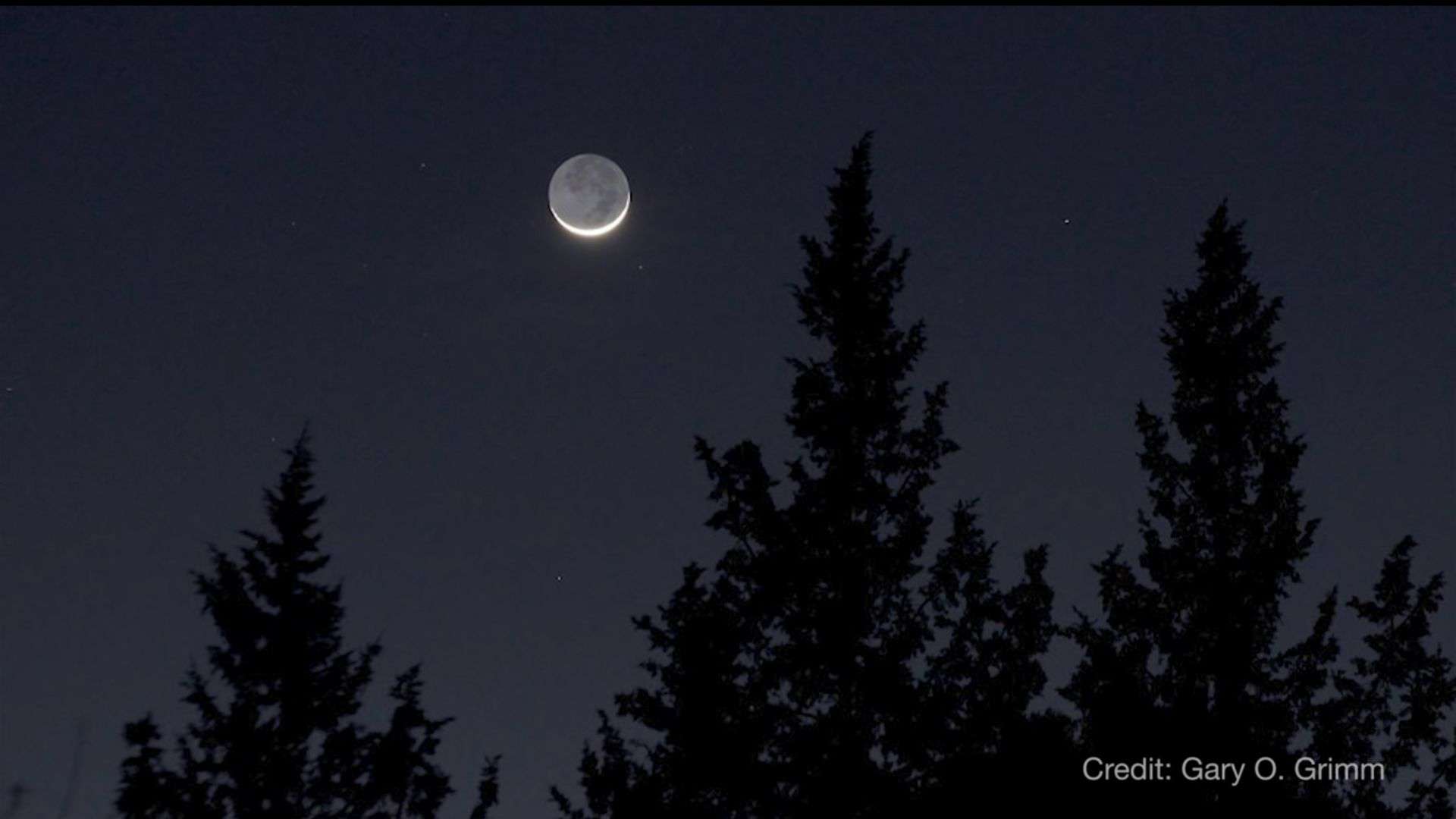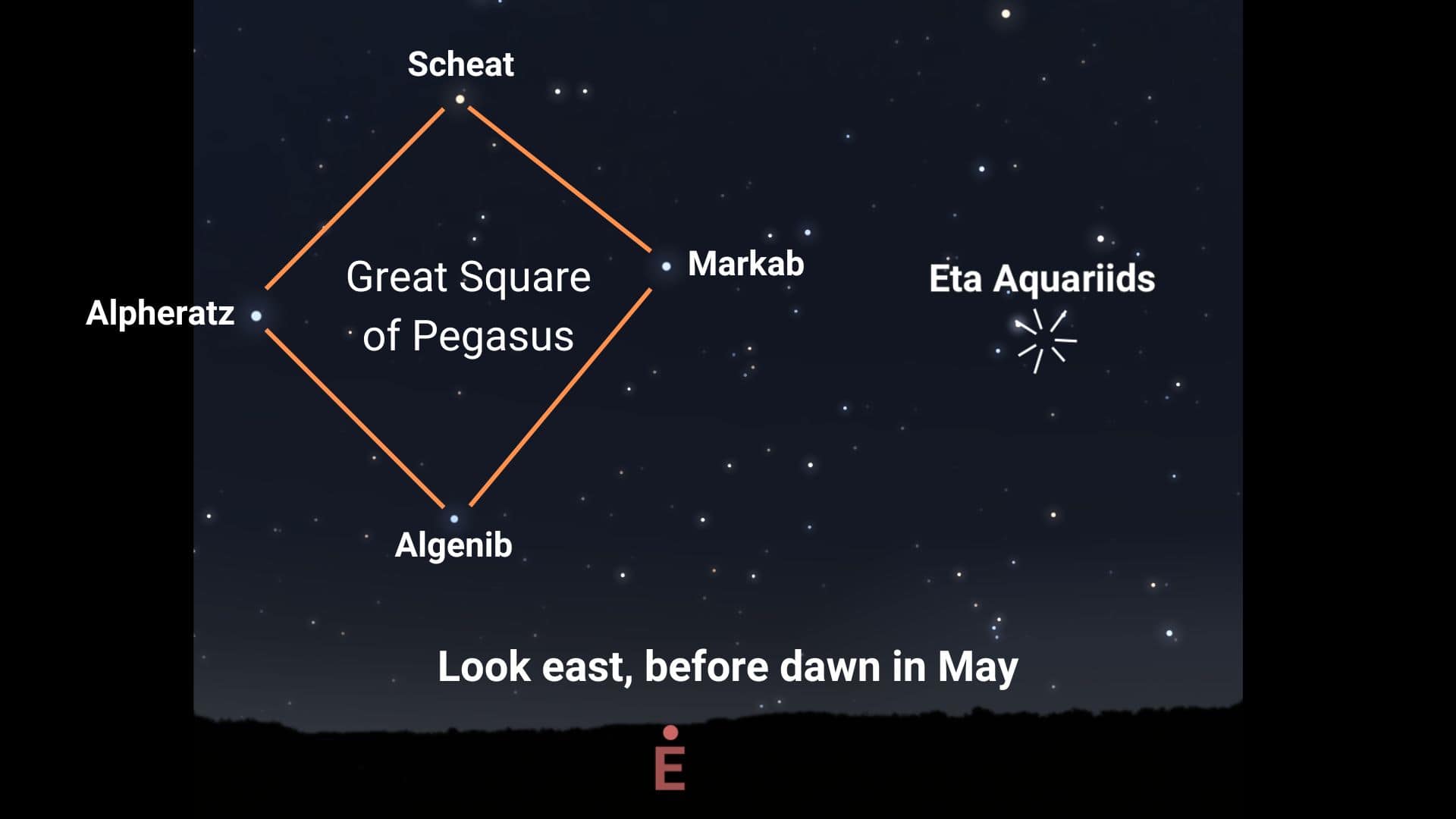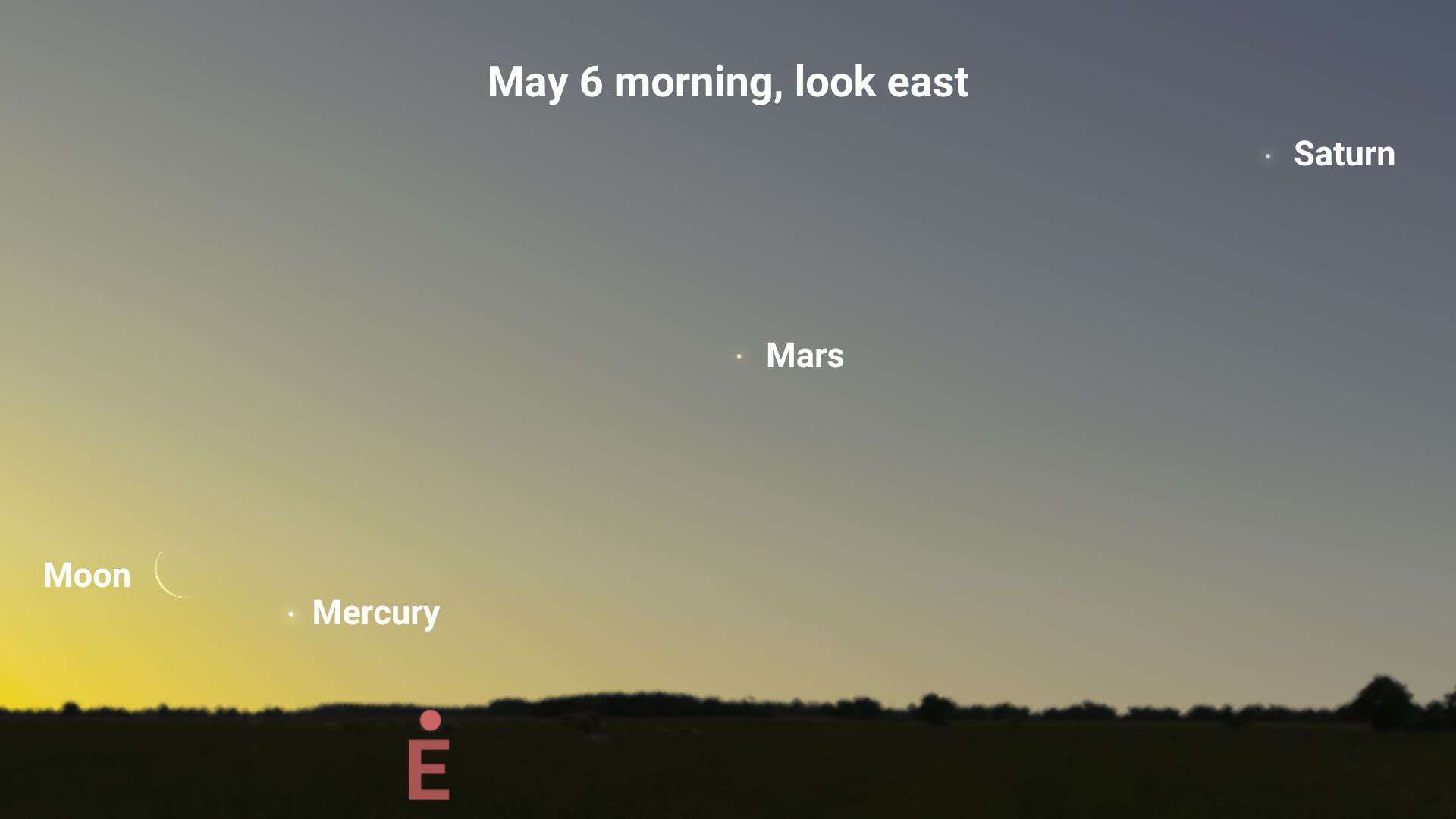As many of you know, the comet 12P/Pons-Brooks is now visible in the night sky from the Northern Hemisphere.
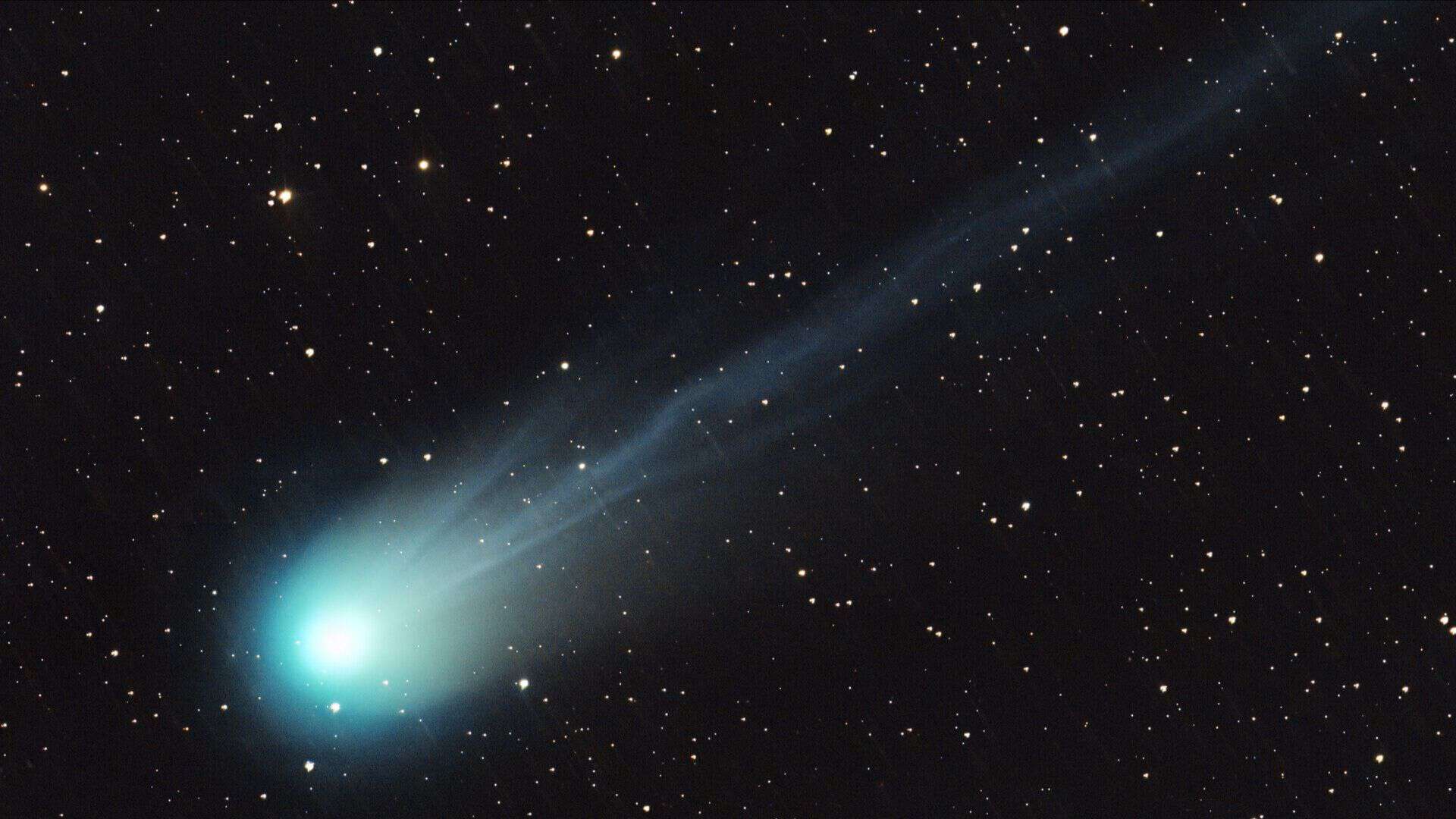
Is it possible to obverse the comet 12P/Pons-Brooks in the daytime during the total solar eclipse on April 8, 2024?
Yes, there is a possibility. Here is our guide on how to watch the comet 12P/Pons-Brooks during the total solar eclipse.
1. Make sure you are inside the path of total solar eclipse
The path of the total solar eclipse on April 8, 2024, is on average 115 miles (185 km) wide and stretches from the Pacific coast of Mexico to the Atlantic coast of Newfoundland, Canada.
Inside the path of a total solar eclipse, the moon will completely block the sun’s disk and the sky will darken as if it were dawn or dusk.
People who are located outside the path of totality will not be able to observe the comet 12P/Pons-Brooks during the eclipse on April 8, 2024.
Related article: Time and path of the total solar eclipse on April 8, 2024 (in details)
2. Know the time and duration of totality from your location
The duration of the total solar eclipse will last for a few minutes in any particular location. However, to know exactly when the total solar eclipse will begin and how much time it will last from your location, visit the interactive map released by NASA. In the interactive map, enter your city name or ZIP code to know whether your location is within the path of totality or not.
As the sky becomes darken during the few minutes of totality so the bright planets which are close to the sun in our sky’s dome will pop up.
Before and after the totality, when the partial solar eclipse will be visible, you can’t see planets or other celestial objects.
3. Spot bright Jupiter to see comet 12P/Pons-Brooks
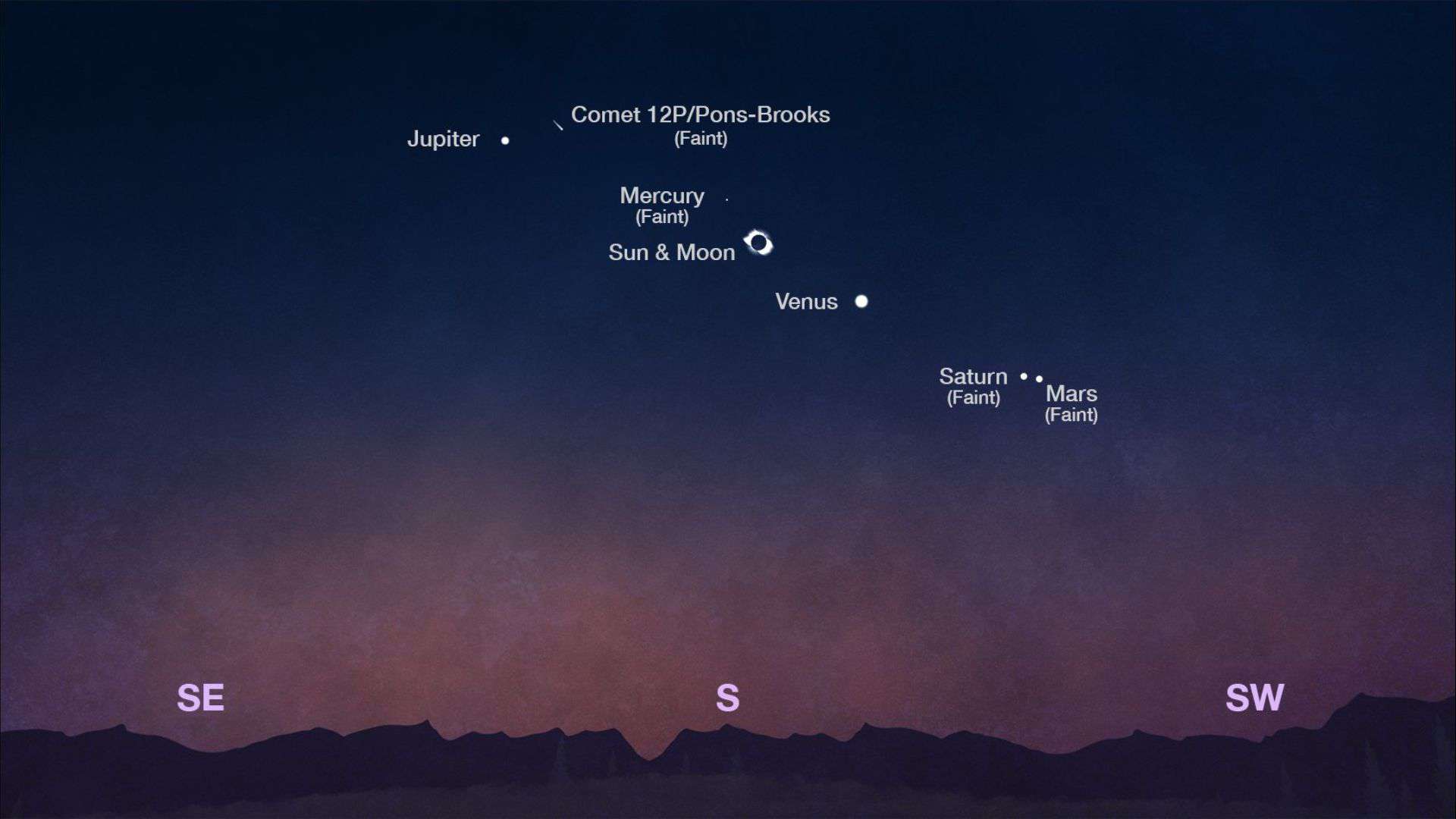
During the total solar eclipse, bright Jupiter and faint Mercury will be visible to the upper left of the eclipsed sun, and bright Venus, faint Saturn, and Mars will be seen to the lower right of the eclipsed sun.
Comet 12P/Pons-Brooks will be visible very close and to the right of bright Jupiter during the total solar eclipse on April 8, 2024. Use Stellarium Web to locate the precise position of comet 12P/Pons-Brooks from your location.
4. Use binoculars or a telescope to observe comet 12P/Pons-Brooks
The comet 12P/Pons-Brooks will shine with a magnitude of around +5 during the eclipse, so it might be visible with your naked eyes. However, I recommend you use a pair of binoculars or a small telescope, as comets are unpredictable.
With our naked eye, when the sky is dark and crystal clear, we can see a star or a planet of magnitude up to +6. So the comet 12P/Pons-Brooks is supposed to be visible as its magnitude lies within the naked eye’s limits.
However, this will not apply to comets, as they are fuzzy objects whose brightness is distributed over a large area compared to stars or planets, which look like point objects in the sky. So it’s always better to use a pair of binoculars or a small telescope to observe the comet 12P/Pons-Brooks.
5. Stop your observation before the totality ends
As the comet will be located close to the eclipsed sun, stop your observation before the totality ends and make sure to use a certified solar filter in front of your camera lens, binoculars, or telescope.
Final word: If you are an amateur astronomer or observer, then I don’t recommend hunting comet 12P/Pons-Brooks during the precious moments of totality. It’s only for experienced astronomers and observers.
Please bookmark Spaceandtelescope.com or follow us on Facebook and Twitter to get latest space news, upcoming skywatching events and astronomy-related content.
